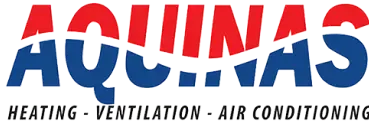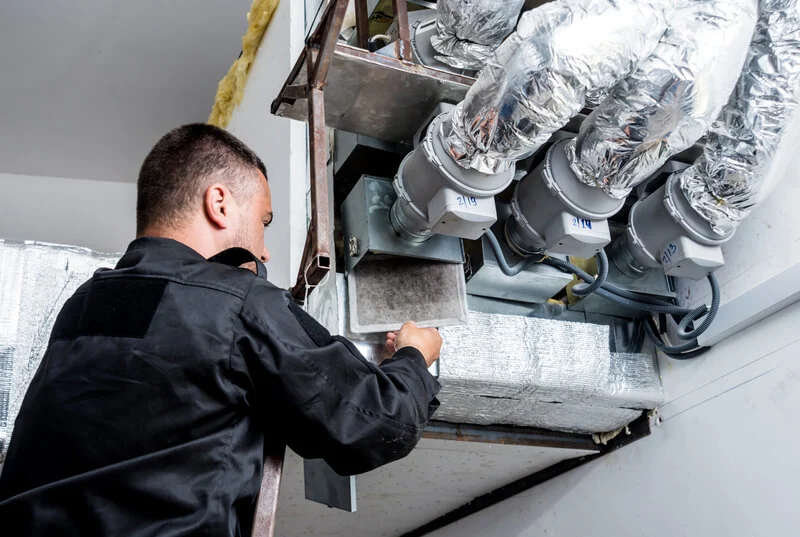5 Ways Dirty Ducts Are Overworking Your Cooling System (and Costing You Money)
Efficient cooling is non-negotiable for commercial and multi-family buildings, especially in California’s warm climate. But even the most advanced air conditioning system can underperform if the ductwork behind it isn’t maintained, resulting in dirty ducts. Over time, dust, debris, mold, and other pollutants accumulate inside ducts, quietly sabotaging airflow and placing unnecessary strain on your cooling equipment.
In this post, we’ll explore five specific ways dirty ducts can overwork your cooling system, raise your energy bills, and reduce comfort throughout your property. Whether you’re managing a 12-unit apartment building or a sprawling office complex, understanding the role your ductwork plays in HVAC efficiency is essential. Moreover,
1. Reduced Airflow Increases System Load
Dust and debris restrict proper air movement
When ducts are clogged with dust, pet dander, construction debris, or mold spores, airflow is significantly impeded. Your cooling system is forced to push harder to move the same volume of air through restricted pathways. Over time, this increased effort reduces system performance and efficiency.
More runtime = higher utility bills and equipment wear
If it takes longer to cool a space, your system must cycle more frequently or run longer—translating directly into higher energy bills. According to the U.S. Department of Energy, an HVAC system can lose up to 30% of its energy efficiency due to leaky or obstructed ducts. Add clogged ducts to the mix, and that figure climbs even higher.
2. Hot and Cold Spots Create Tenant Discomfort
Uneven airflow results in inconsistent temperatures
Dirty ducts can create imbalances in airflow across rooms or units. The result? One office is freezing while the next feels like a sauna. These temperature inconsistencies are especially problematic in multi-tenant buildings where comfort expectations vary.
> Learn how our ductwork services help restore balanced airflow throughout your property.
Overcompensation leads to further inefficiencies
When tenants experience discomfort, they often adjust thermostats—sometimes excessively. This forces the system to work even harder and can lead to a feedback loop of inefficiency. Worse, it may trigger service requests or complaints that burden your maintenance team.
3. Dirty Ducts Decrease Energy Efficiency
Blockages = higher energy consumption
Just like a clogged artery reduces blood flow, blocked ducts reduce system efficiency. When ducts are coated in grime, conditioned air struggles to travel efficiently through the system, and your AC unit must consume more electricity to compensate.
Energy audits often reveal duct issues
Many commercial energy audits reveal that duct obstructions are among the top contributors to poor HVAC efficiency. In fact, according to ENERGY STAR, dirty or leaky ducts can lead to energy losses of 20–40%—a cost that directly affects your building’s bottom line.
Tip: Schedule a duct inspection before peak cooling season begins. This proactive step can help you identify blockages and efficiency bottlenecks early.
4. Increased Risk of Cooling System Breakdowns
Overworked AC systems are prone to failure
When your cooling system is under constant strain from poor airflow, it increases wear on essential components like the blower motor, condenser coils, and compressor. This can shorten the lifespan of your system or lead to costly breakdowns, especially during high-demand summer months.
Dust infiltrates internal components
Contaminants in return ducts often find their way into the AC unit itself. This internal buildup reduces system performance and can trigger component malfunctions. For property managers, this often means urgent service calls, unexpected repair costs, and, most damaging, tenant complaints.
5. Indoor Air Quality Declines, Affecting Occupant Satisfaction
Dirty ducts circulate pollutants
Dust, pollen, mold spores, and bacteria that accumulate in ducts don’t just sit there. They circulate. Every time your cooling system kicks on, those contaminants are distributed throughout your building.
This poses serious concerns for:
- Tenants with allergies or respiratory issues
- Sensitive commercial environments (medical, childcare, etc.)
- Property managers seeking to maintain healthy occupancy levels
IAQ is now a competitive advantage
Post-COVID, indoor air quality (IAQ) is a top concern for tenants and employees alike. Clean ducts are an essential part of an overall strategy to maintain a healthier indoor environment and reduce liability concerns.
Why Duct Cleaning Should Be Part of Your Cooling Maintenance Plan
Duct cleaning is often treated as a separate service. However, for commercial and multi-family buildings, it should be integrated into your overall cooling system maintenance plan. While filter changes and coil inspections are routine, the ductwork behind the walls can quietly degrade system performance over time. Including duct inspections and periodic cleanings in your preventative maintenance schedule ensures that airflow stays unobstructed, energy costs remain stable, and equipment strain is minimized.
For property managers overseeing tenant comfort and operational budgets, this integration makes financial sense. Just like you wouldn’t skip checking refrigerant levels, you shouldn’t overlook the condition of your ducts, especially since airflow blockages are among the most common HVAC issues in large buildings. Partnering with a commercial HVAC contractor who understands how ductwork affects cooling efficiency can extend the life of your AC system and reduce emergency service calls in the peak of summer.
The Bottom Line: Clean Ducts = Efficient Cooling
You don’t have to choose between comfort and cost-efficiency. Regular duct cleaning allows your air conditioning system to operate at peak performance, reduces maintenance issues, and improves air quality for everyone in the building.
Key benefits of commercial and multi-family duct cleaning:
- Lower energy bills
- Fewer system breakdowns
- Longer equipment lifespan
- Healthier indoor environments
- Improved tenant and occupant satisfaction
If your property hasn’t had a duct inspection or cleaning in the last 2–3 years, now is the time to act—especially before peak cooling season. At Aquinas HVAC, we specialize in duct cleaning services for large commercial and multi-family properties, with minimal disruption to operations.
Schedule Duct Cleaning Before It Costs You More
Don’t wait for higher energy bills or frustrated tenants to tell you something’s wrong. Proactive duct maintenance is one of the simplest, most cost-effective ways to protect your cooling system investment and boost overall building performance.

